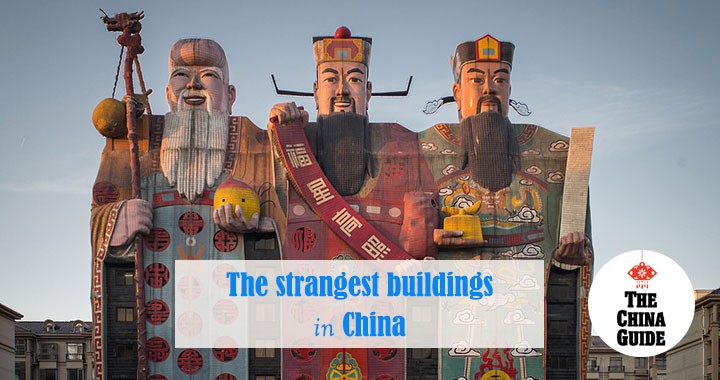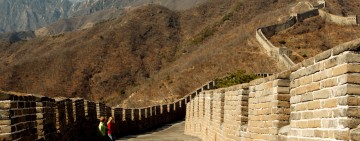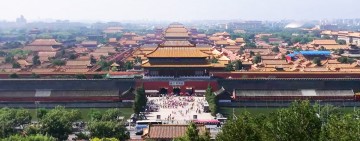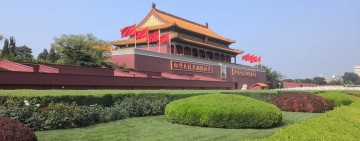The Strangest Buildings in China
Zuletzt aktualisiert am 2017-07-26
There are many buildings scattered throughout the Chinese landscape that are as unique as the country itself. Inspired by architects from all corners of the world, the architectural landscape in China is truly a testament to how “awe” inspiring China really is. We have put together a list of some of the most off-the-wall buildings you can find while travelling around China.
However, whether or not you relish the unique architecture that exists all across China, the Communist Party’s Central Committee and the State Council has recently decided to put an end to these innovative displays, banning “bizarre” architecture.
Tianzi Hotel, Langfang, Hebei province

As far as buildings go, this is by far and away one of the strangest in China. This “Hotel of the Gods” is designed to look like the gods of prosperity, fortune, and longevity. The hotel also offers one of the world’s most unique hotel suite experiences, located inside the lucky peach held by the god of longevity. The entrance to the hotel is located in one of the god’s feet and its windows follow the patterns on their robes. The hotel is located about an hour east of Beijing in Hebei province.
Sunrise Kempinski Hotel, Beijing

The unique design of this hotel is supposed to resemble a sunrise over Yanqi Lake, which is also supposed to symbolize China’s rising economy. Another unique feature is the hotel’s entrance, which is supposed to resemble the mouth of a fish, which brings prosperity in Chinese culture. So although one might not see the design of this hotel as being traditionally Chinese, it is still highly symbolic. This massive masterpiece opened in late 2014 and covers a landmass of 75 acres. The hotel building itself is 100 meters high and 116 meters wide with over 300 guestrooms and suites.
Wujin Lotus Conference Center, Wujin, Jiangsu province

Situated in an artificial lake, “The Lotus Building” is one of China’s more aesthetically pleasing strange buildings. Created and built by Australian architecture firm Studio 505, the inspiration for the building is a blooming lotus flower. The building is composed of steel “petals” that are able to move from a bud to a fully opened bloom. The structure inside is composed of cathedral-like ceilings, conference rooms, exhibitions halls, and offices. Another unique feature about this masterpiece is that it uses geothermal piles and the surrounding artificial lake to regulate the internal temperature with minimal energy use.
Liuli China Museum, Shanghai

The term “Liuli” means ‘glass art’ in Chinese, a fitting name since the exterior of this museum is almost entirely made out of glass. Located in Shanghai and designed by Liuli Gongfang Inc., a glass studio devoted to artistic Chinese glassware, this museum holds a large collection of glass-based art. At night, the exterior of the museum is illuminated with an eye-catching fiery orange light.
Star Trek Enterprise Building, Changle, Fujian province

One of the most interesting buildings China can be found on China’s coastline in the city of Changle in Fujian province. This building is largely influenced by the American show “Star Trek” and pays homage to Star Trek’s USS Enterprise spaceship. The construction of this building is due in large part to NetDragon Websoft founder Liu Dejian and will provide office spaces for the Chinese videogame development company. Construction on the building began in October 2010 and was finalized in late 2014. The building cost approximately $97 million to build. Aside from the modern architecture of the building, automatic sliding doors between rooms, and 30 foot slides made of metal for quick access to the ground level, the inside of the building also has a very accurate, life size replica of a T-Rex.
Guotai Arts Center, Chongqing

This building was designed to resemble a bunch of chopsticks at a hot pot restaurant, made up of a series of red and black overlapping arch frames. It is the centerpiece of the Cultural Business District and the city of Chongqing. The mastermind behind this architectural phenomenon is famous Chinese architect Cui Kai. He wanted to design something that would completely stand out but also instill the cultural symbolisms of China. ■




